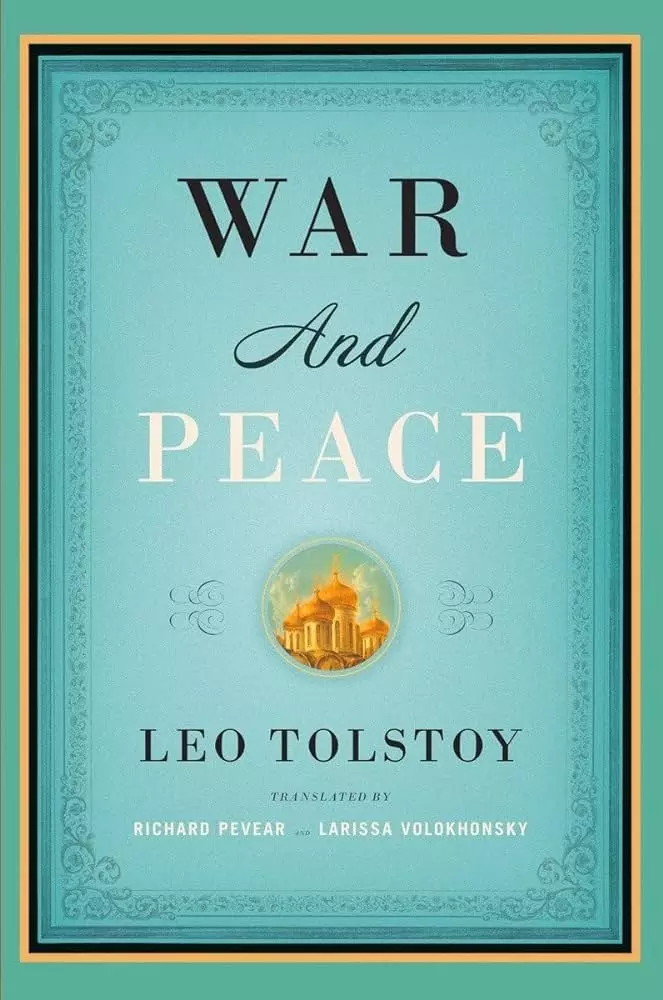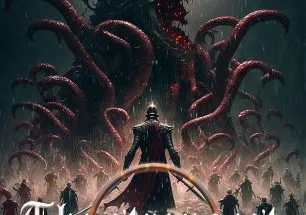Dive into the Timeless Epic: “War and Peace” by Leo Tolstoy
Are you ready to embark on a literary journey like no other? Step into the captivating world of Leo Tolstoy’s masterpiece, “War and Peace.” Immerse yourself in the grandeur of 19th-century Russia, where love, war, and destiny collide in an epic tale that has stood the test of time.
Why “War and Peace”?
- Epic Scope: Tolstoy’s monumental work spans over 1,000 pages, weaving together the lives of Russian aristocrats, soldiers, and peasants against the backdrop of Napoleon’s invasion. It’s a story of epic proportions that will keep you engrossed from beginning to end.
- Rich Characterization: From the idealistic Pierre Bezukhov to the spirited Natasha Rostova, Tolstoy’s characters are as complex and multifaceted as real-life individuals. You’ll find yourself drawn into their triumphs, tragedies, and innermost struggles.
- Historical Insight: “War and Peace” offers a fascinating glimpse into Russian society during the Napoleonic Wars, showcasing the political upheaval, social dynamics, and cultural nuances of the era. Tolstoy’s meticulous attention to detail brings history to life in vivid technicolor.
- Timeless Themes: Despite being set in the early 19th century, the themes explored in “War and Peace” – such as love, loyalty, honor, and the search for meaning – remain deeply relevant today. It’s a story that transcends its historical context, offering profound insights into the human condition.
- Literary Legacy: Widely regarded as one of the greatest novels ever written, “War and Peace” has inspired generations of readers, writers, and thinkers around the world. Its enduring popularity speaks to its timeless appeal and universal resonance.
War and Peace Summary
War and Peace is a monumental novel by Leo Tolstoy that depicts the lives of five aristocratic families in Russia during the Napoleonic Wars. The novel spans more than a decade, from 1805 to 1820, and interweaves historical events with fictional drama, philosophical reflections, and spiritual quests. The novel has four main parts and two epilogues, as well as numerous chapters devoted to the analysis of war and history.
The novel begins with a party in St. Petersburg, where we are introduced to the main characters: Pierre Bezukhov, the illegitimate son of a wealthy count who inherits his fortune and becomes a socialite; Prince Andrei Bolkonsky, a disillusioned and ambitious soldier who leaves his pregnant wife to join the army; Natasha Rostova, the lively and charming daughter of a noble family who dreams of love and happiness; Nikolai Rostov, Natasha’s brother and a patriotic officer who joins the army with his friend Denisov; and Sonya, Nikolai’s cousin and childhood sweetheart. We also meet the scheming Kuragin family, who try to manipulate Pierre, Andrei, and Natasha for their own interests.
The novel follows these characters as they experience the turmoil of war and peace, love and betrayal, joy and sorrow, and the search for meaning and purpose in life. Pierre, who is dissatisfied with his marriage to the beautiful but immoral Helene Kuragina, becomes interested in Freemasonry and tries to reform his life and society. Andrei, who is wounded and presumed dead at the Battle of Austerlitz, recovers and falls in love with Natasha, but postpones their marriage for a year. Natasha, who is impatient and restless, succumbs to the seduction of Anatole Kuragin, Helene’s brother, and breaks her engagement with Andrei. Nikolai, who is loyal and brave, fights in several battles and rescues his family from financial ruin by marrying the wealthy Princess Marya, Andrei’s sister. Sonya, who is selfless and devoted, renounces her love for Nikolai and remains unmarried.
The novel reaches its climax in 1812, when Napoleon invades Russia and the characters face the horrors and hardships of war. Pierre, who is fascinated by Napoleon and believes he has a destiny to kill him, becomes a prisoner of war and witnesses the atrocities committed by the French army. Andrei, who rejoins the army and hopes to die in battle, is severely wounded and reconciles with Natasha before dying. Natasha, who nurses Andrei and suffers from guilt and grief, matures and finds comfort in religion. Nikolai, who distinguishes himself in combat and becomes a colonel, marries Marya and settles down in the country. Sonya, who remains faithful to her family and friends, lives with the Rostovs and helps them with their charitable work.
The novel ends with two epilogues that show the characters’ lives seven years after the war and explore the philosophical and historical themes of the novel. Tolstoy argues that war and history are determined by the collective actions of millions of people, rather than by the will of a few individuals or the laws of science. He also criticizes the conventional views of history and the glorification of war and violence. He suggests that the true meaning and purpose of life can be found in the simple and ordinary activities of family, work, and faith, rather than in the pursuit of fame, power, and wealth. He concludes that the ultimate goal of human existence is to achieve moral and spiritual perfection, which he calls “the good”.

Whether you’re a seasoned bibliophile or new to classic literature, “War and Peace” promises an unforgettable reading experience. So why wait? Dive into this literary masterpiece today and discover why it continues to captivate readers across the globe.
Get a Copy of War and Peace by Leo Tolstoy
You can use the link below to get a Copy of War and Peace by Leo Tolstoy on Amazon and embark on an unforgettable journey through the pages of history and human drama.


